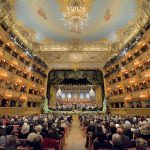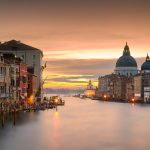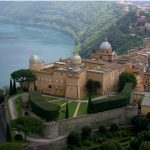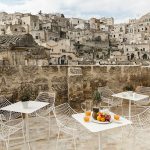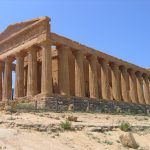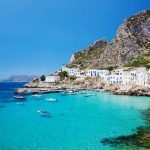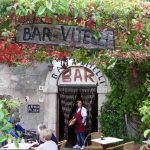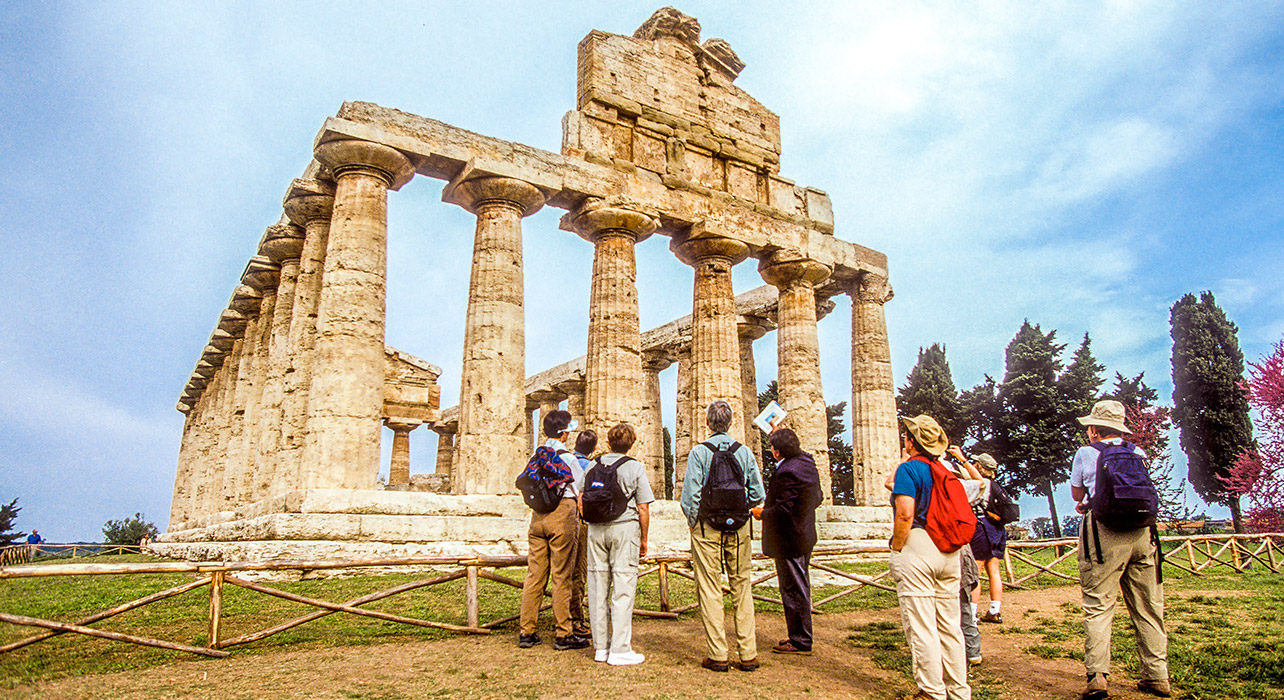
19 May 2018 Paestum: welcome to the home of the gods
“Enter the home of the gods!” is the invitation that the official website of the Archaeological Park of Paestum extends to visitors. A promise as fantastic as it is concrete that announces a rare journey into history and myth, passing through both Greek and Roman civilization to reach the eighteenth century, the period of the Grand Tour, with the testimonies of artists who were fascinated by its decadent atmosphere: from great painters and engravers like Piranesi and Turner, to the poet Goethe who wrote down the “memories of a once magnificent city”.
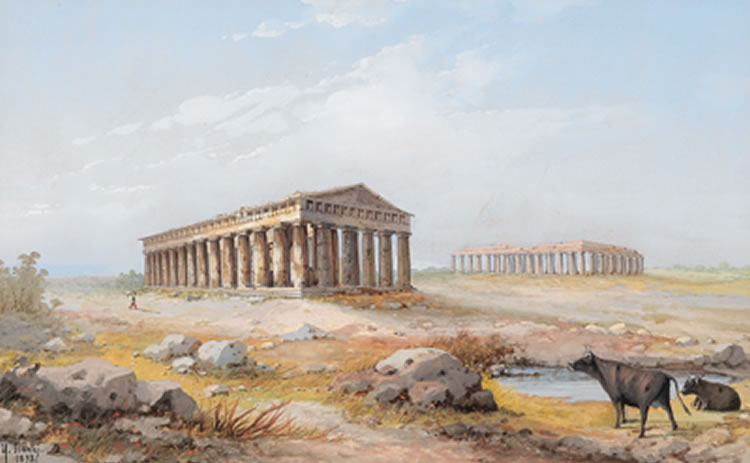
Hera, Athena, Neptune: the magic of the Greek temples
Situated to the south-east of the Gulf of Salerno, in the southern part of the Piana or Plains of Sele, Paestum is a very important archaeological site recognized by UNESCO as a World Heritage Site. Its uniqueness is due to the excellent state of preservation of the temples built between the VI and the V century B.C., equal only to those of Athens and of Agrigento in Sicily.
Discover the most beautiful villas in Cilento Coast
According to myth the city of Paestum was founded in VII B.C. by Greek adventurers led by Jason who, traveling up the Tyrrhenian coast, arrived at the mouth of the river Sele where they stopped off to found a fortified town they called Poseidonia. 
From the second half of the VI century B.C., Poseidonia began the growth process that would make it one of the most important cities in Magna Grecia and has left us the majestic monuments visible today on the archaeological site: the Temples of Hera, Athena and Neptune.
Hera is the most ancient of the three monuments and belongs to the first generation of large stone temples which began around 560 B.C, while the temple of Athena is the only temple that we know with certainty to which divinity it was dedicated: Athena, the goddess of handicraft and warfare. The temple of Neptune is the biggest in Paestum and the best preserved. Built towards the middle of the V century B.C., it represents the classic declination of Greek temple architecture. The great temple of Zeus was built in Olympia in Greece during the same period, but it is less well preserved than this one.
The three temples with their altars, the main square of the Greek city with its symbolic buildings such as the tomb of the founder hero and the circular structure for holding meetings, are the most evident signs of the town’s Greek phase.
With the arrival of the Romans no changes were made to the temples but new structures were built in the city: the Forum, a political and commercial space, the Amphitheater where the gladiators fought with animals and the Campus where the Romans practiced sport.
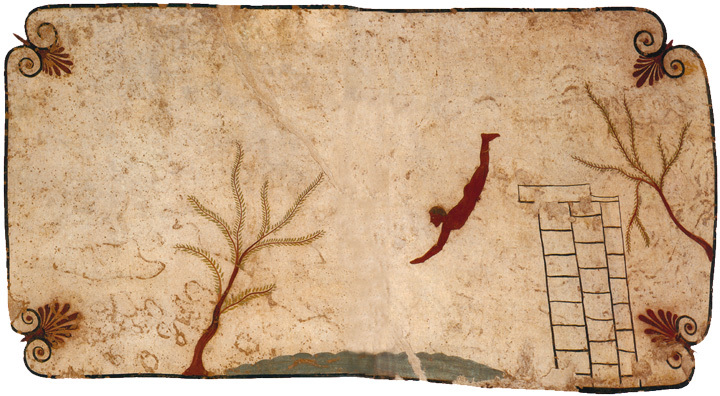
The tomb of the diver
The tomb of the diver, the mystery of life and death
History, art and mystery find their highest expression in the Tomb of the Diver, the only evidence of large dimension non vascular Greek painting before the IV century B.C. The fresco portrays a nude young man diving into the ocean, a metaphorical image of the passage from life to death.
The tomb was found 2 km south of Paestum, inside a small VI-V century B.C. necropolis. The scene of the Diver was on the underside of the covering slab of the tomb, facing the deceased. It seems that the funeral that took place around 475 B.C. and the frescoes remained in the dark for almost two and a half millennia until they were discovered in 1968.
Discover the most beautiful villas in Cilento Coast
The exceptional feature of the tomb is the metaphysical message it transmits: in the Greek cities of southern Italy philosophers like Pythagoras and Parmenides were confronting questions linked to metaphysics and life after death. Beliefs abounded inspired by Pythagoreanism and Orphism (in turn inspired by the myth of Orpheus who returns from Hades aided by music), shared only amongst those who were “initiated” into the mysteries of this tradition. There is also a hypothesis that the person buried in the tomb of the diver was an “initiate”.
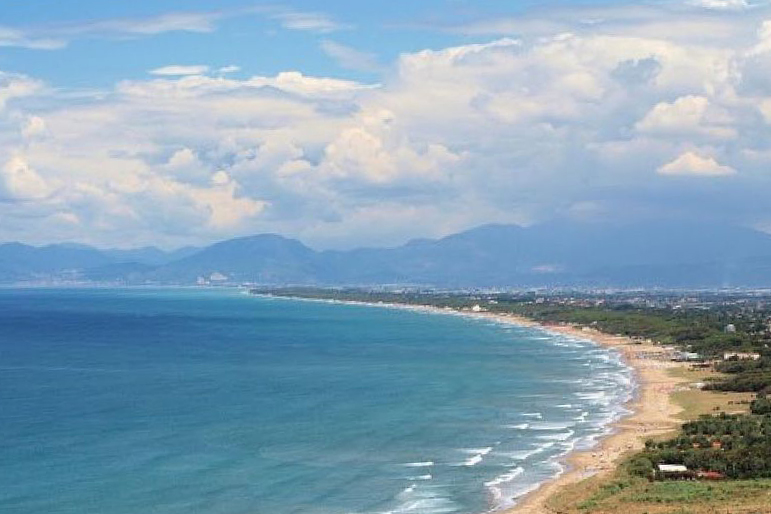
The sea plays an important role in the history of Paestum
From the Argonauts to operation Avalanche
The sea plays an important role in the history of Paestum: its second name, Poseidonia, comes from Poseidon, god of the sea, and the temple of Athena, slightly elevated compared with the other two temples, guided sailors approaching the coast from the sea. Today it is possible to walk from the town to the beach in just 15 minutes along the Sentiero degli Argonauti- Path of the Argonauts, an ancient route that connected the city to the sea.
A curious anecdote: in September 1943, during the Second World War, this same stretch of sea witnessed the landing of the American troops during the famous Operation Avalanche.
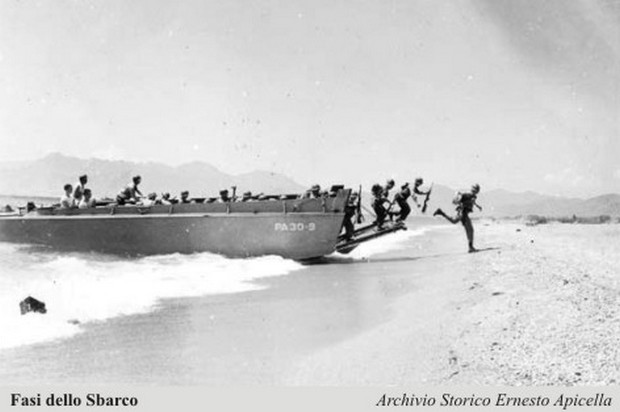
the landing of the American troops during the famous Operation Avalanche.
Cilento: nature, myth and philosophy
While Paestum is one of the most beautiful places to visit in Italy, the surrounding area is no less fascinating: we are on the edge of the Cilento region with its National Park that is a UNESCO World Heritage Site.
The little town of Agropoli, on the sea, where the Greek settlers landed before founding Poseidonia-Paestum is very interesting. One of Cilento’s most beautiful beaches is located here, the Bay of Trentova, surrounded by hills covered in olive-groves and vineyards; around 15 kilometers away from here it is possible to immerse oneself in the tranquility of the Oasis of the Alento River, with its artificial lake and birdwatching hides.
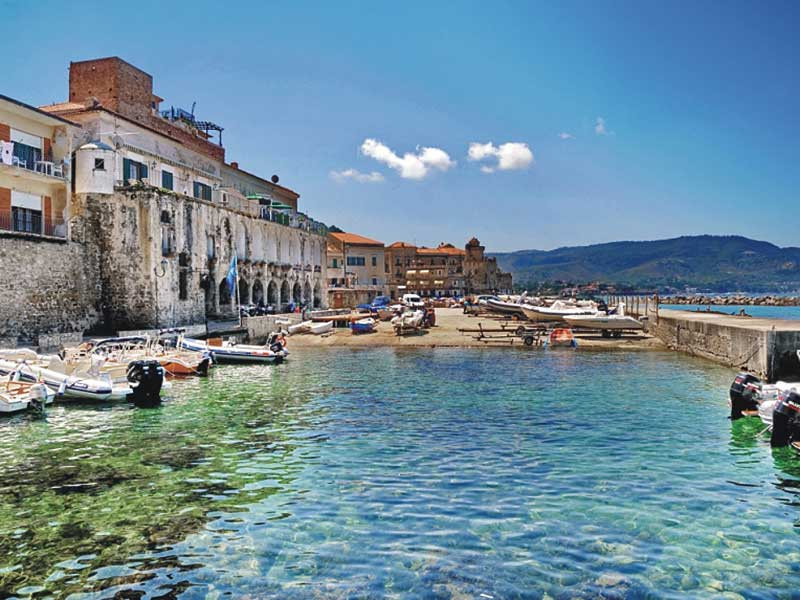
The village of Castellabate
Another place to visit is the village of Castellabate clustered around the Castle of San’Angelo which was built in the XII century on the top of the hill of the same name.
The district includes the marvelous protected marine area of Santa Maria di Castellabate containing the famous Punta Licosa which, according to legend, is named after Leucosia, one of the sirens that met Ulysses.
Not only nature and archeology but also philosophy flourished in these lands: the important Archeological Park of Elea-Velia, in the municipality of Ascea, transports us to the ancient city that, hundreds of years before Christ, was the beacon of western thought, the birthplace of the great philosophers of the Eleatic school, like Parmenides and Zeno.

Velia
The Mediterranean diet, mozzarella di bufala, white figs and Aglianico wine
Finally, a visit to Pollica is a must. This is the corner of Cilento where the American physiologist Ancel Keys studied the characteristics of the diet of the town’s long-lived inhabitants defining it as the very famous “Mediterranean diet”.
For this reason it is worth mentioning the products of this particularly generous land.
Buffalo mozzarella or mozzarella di bufala is definitely the main food product of Paestum produced in various forms from the excellent milk offered by the area’s very modern farms.
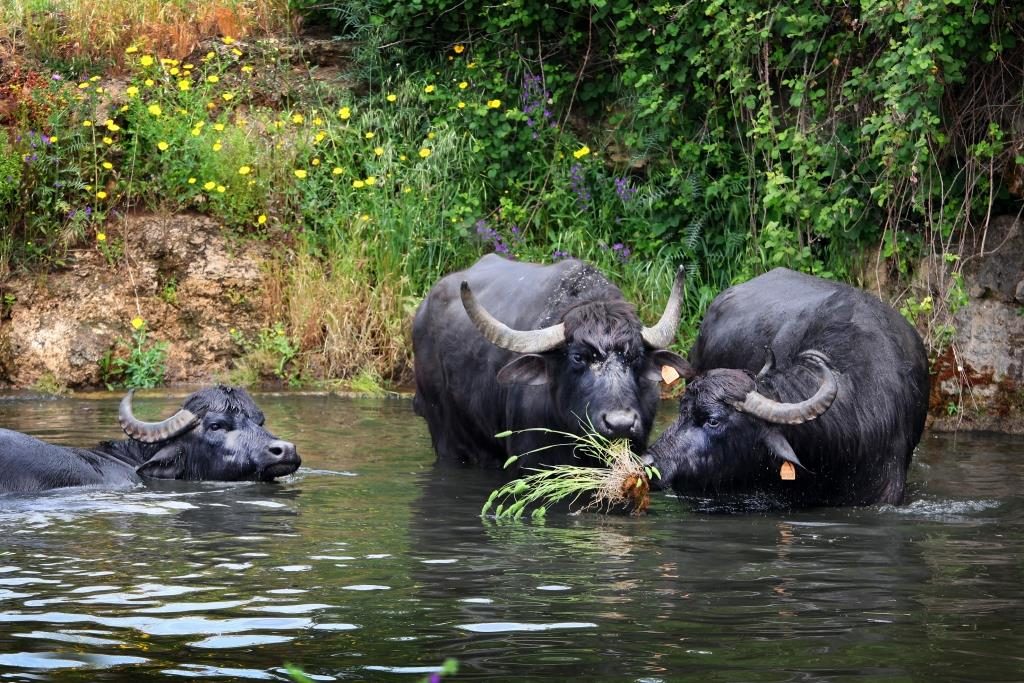
Another specialty is mozzarella in the “mortella”, i.e. wrapped in twigs of myrtle. Other products that are typical of the Paestum area are the “round” artichokes which have PGI [Protected Geographical Indication] recognition and the many varieties of tomato including the small yellow tomatoes used in delicious recipes and for first courses prepared with fresh pasta or other varieties of pasta from Campania.
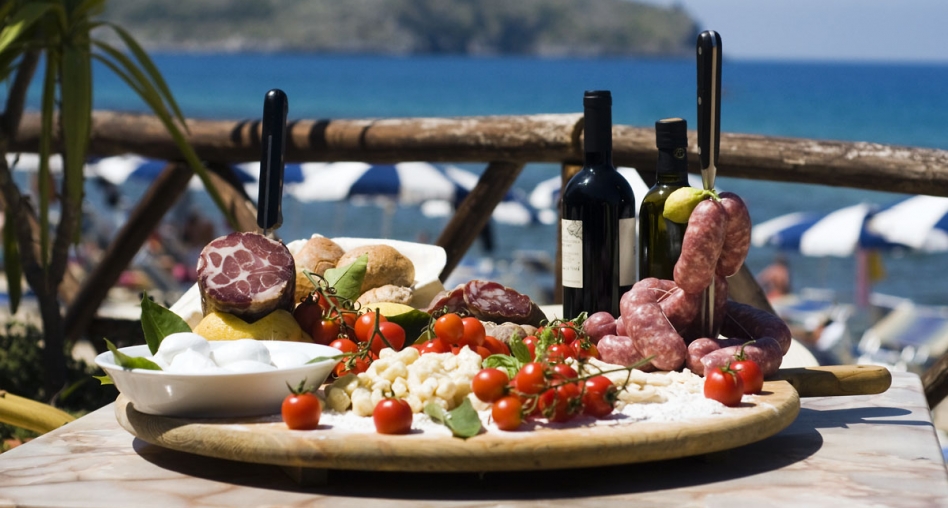
There are many cow’s milk cheeses from the neighboring towns (caciocavallo), Pecorino and Caprino, lots of excellent quality cold pork meats including Soppressata, the white beans of Controne the chickpeas of Cicerale and the sweet chestnuts from Roccadaspide.
There is also a lot of fish and specialties from the sea and coast including the famous Menaica anchovies that are preserved in salt.
Cilento is famous for the excellent extra virgin olive oil produced on its hills and for the white figs of Cilento to be eaten fresh in the summer and dried during the rest of the year.
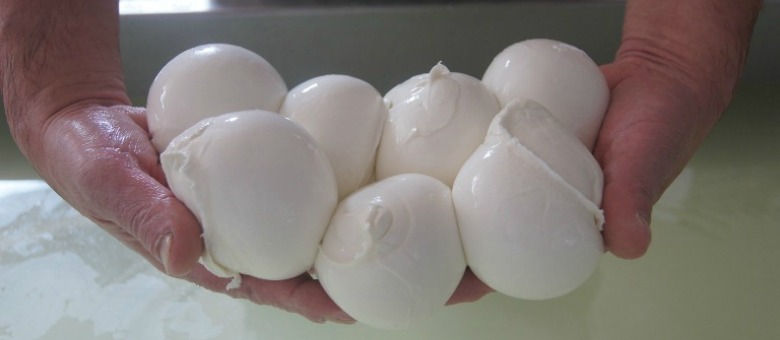
Mozzarella di bufala
The various treats to be savored include the zeppola cilentana, a fried mixture of flour and water enriched with aromatic herbs and anchovies.
Excellent Paestum IGT wines are produced in the hills near Paestum and Agropoli; red wines made in particular from Aglianico and Piedirosso grapes, and Fiano and Falanghina for the whites.


